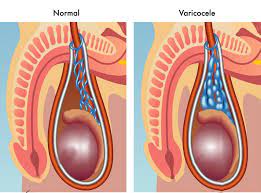
Microscopic varicocelectomy
Varicocele, or enlarged veins in the scrotum, can cause oxidative stress, disrupt proper blood flow to the testes, or lower testosterone production — all of which can have a negative impact on sperm count. Varicocele usually appears during puberty and often goes unnoticed because the symptoms are usually mild.
A varicocele is most commonly found on the left side of the scrotum and often causes no symptoms. Among the possible signs and symptoms are:
- Standing or late in the day are more likely to cause a dull, aching pain or discomfort. Pain is frequently relieved by lying down.
- A mass in the scrotum. If the varicocele is large enough, a mass resembling a "bag of worms" may be visible above the testicle. A smaller varicocele may be too small to see but detectable by touch.
- A varicocele can make fathering a child difficult.
Diagnosis
Before performing Microscopic Varicocele, some common diagnostic tests include:
- The technique Valsalva maneuver can make a varicocele easier to examine.
- Ultrasound creates images of structures inside your body by using high-frequency sound waves.
Treatment
Microscopic surgery can take one of two approaches: inguinal or subingual.
- The inguinal approach involves making an incision in the skin to gain access to the ilioinguinal nerve, which branches off from the first lumbar nerve in the lower back. If the varicoceles are causing pain, this method of microsurgical varicocelectomy is usually recommended. Cutting this nerve and sealing the affected veins can provide long-term pain relief.
- The incision is made lower in the groin with the subinguinal approach.
Make an appointment right away for consultation on your andrological issue.
Call With Doctor